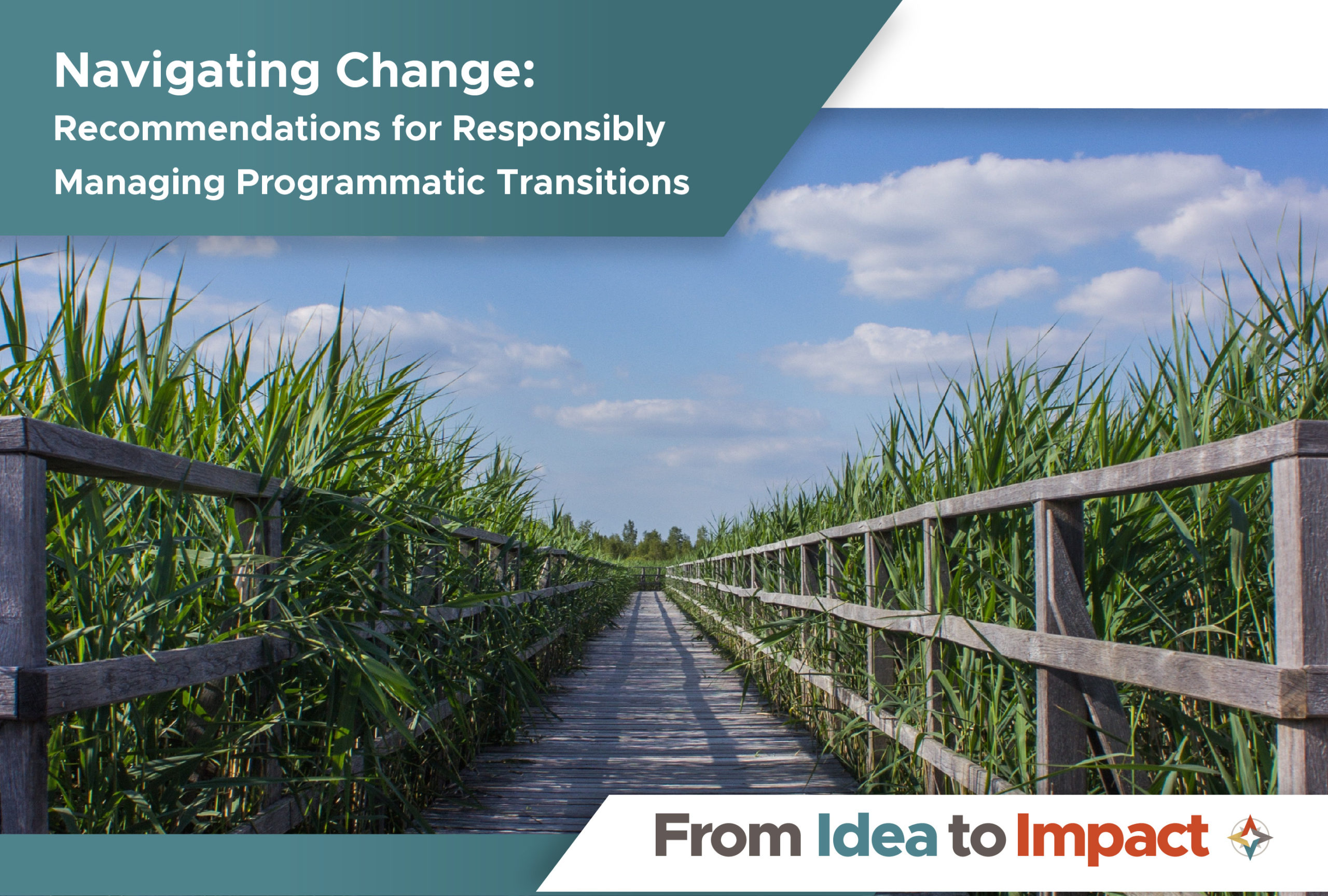Navigating Change: Recommendations for Responsibly Managing Programmatic Transitions

As philanthropies implement their strategies, engage in learning, and assess their impact over time, changes to who, what, and how they fund are inevitable. Programmatic transitions can happen for a variety of reasons. Some strategies are time-bound and will naturally come to an end, and some funders may need to adapt their strategies in response to an external event (such as crises like pandemics or natural disasters, economic decline, or a changing political landscape). Some strategies change in response to shifts in the needs of the communities being served, while others change for internal reasons, such as foundation leadership transitions or unexpected budget changes. Regardless of why a philanthropy plans to shift its programmatic strategy, it is important to manage these transitions carefully and thoughtfully.
Building on Arabella’s recent report Before Sunset: Recommendations for Spending Down a Foundation and Extending Impact, this blog post shares more information about best practices for foundations that will continue their operations but are preparing for transitions in their grantmaking strategy or approach.
By managing a programmatic transition with intention, clear communication, and sufficient resources, funders can better preserve the impact of their programs and ensure the continued success of their grantee partners. Alternatively, abrupt transitions can create financial hardship for grantee organizations that no longer fit a programmatic focus and result in gaps in the funding ecosystem for a given field.
Some grantees may rely highly on one institution’s funding and may face funding gaps that result in challenges sustaining their programs and operations if that funder discontinues its support, resulting in significant disruption for both staff and beneficiaries. If grantees face significant challenges sustaining their programs and operations without one funder’s support, the impact they have made to date may be lost. Funders should consider the factors below when assessing risk to individual grantees:
- The number of years the grantee has received their funding. Grantees with a long history of funding from one funder may be more reliant on that funding and face greater risk of financial instability once funding stops.
- The percent of the grantee’s annual revenue that comes from their funding. If one funder’s grants comprise a larger percentage of the grantee’s revenue, the grantee is likely more reliant on that support and may have to significantly curtail or end their programming without it.
- The number of years the organization has been in existence. Generally, older organizations have larger and more diversified funding streams as well as a larger network of potential funders to partner with, and may be more resilient against the shocks of a programmatic shift.
- Staff size. Typically, larger organizations with many staff members have more internal capacity for fundraising and are more likely to find other donors to help fill potential funding gaps.
Once funders have considered these factors and the effects on individual grantees, and once they have determined that it is the appropriate time to shift their programmatic focus, funders should implement the following principles and practices for a responsible programmatic transition.
- Develop a framework for implementing a programmatic transition: Funders should align internally on a plan for implementing a programmatic transition, including determining an approach (for instance, will the organization end all grants at once, or slowly ramp down spending over time), a timeline for shifting the programmatic focus or ending the program, and a budget for adjusting spending over time (including for transition grants, mentioned below).
- Communicate early and often with grantees: As soon as funders develop this framework, it is important to share these plans with grantees. By communicating as early as possible and sharing updates with grantees on a consistent basis, grantees will be better able to adjust their programming or adapt their fundraising strategies accordingly.
- Provide transition grants to grantees that may be adversely affected by a gap in funding: As noted above, programmatic transitions can leave funding gaps. If grantees are at a high risk of experiencing a funding gap, funders should provide transition grants to help grantees sustain their programs and operations until the grantees can identify new funding sources or adapt their program budget and activities in response to losing funding. Funders can provide different types of transition grants based on a grantee’s specific needs, including programmatic grants or multi-year general operating support grants. As useful, funders can engage a fiscal sponsor or intermediary to facilitate these grants.
- Help identify alternative funding sources and opportunities for support: Funders can also use their professional networks, including their relationships with peer donors and donor networks, to help identify alternative funding sources for their grantees. Funders can connect grantees directly with peer institutions or facilitate conversations with other donors to determine if they can provide support in the future. Additionally, funders can help grantees validate the impact of their programs by supporting their investment in evaluation and learning activities that are useful for programmatic improvement or influencing the field. This will ultimately help grantees communicate the impact of their programs and secure funding from donors outside of their existing networks.
Implementing best practices for responsible programmatic transitions can help donors maintain strong relationships with grantees and peer donors, and perhaps more importantly, preserve and sustain the impact of their philanthropic programs once they have transitioned their focus, resulting in sustained, long-term impact for grantees and across the sector.
